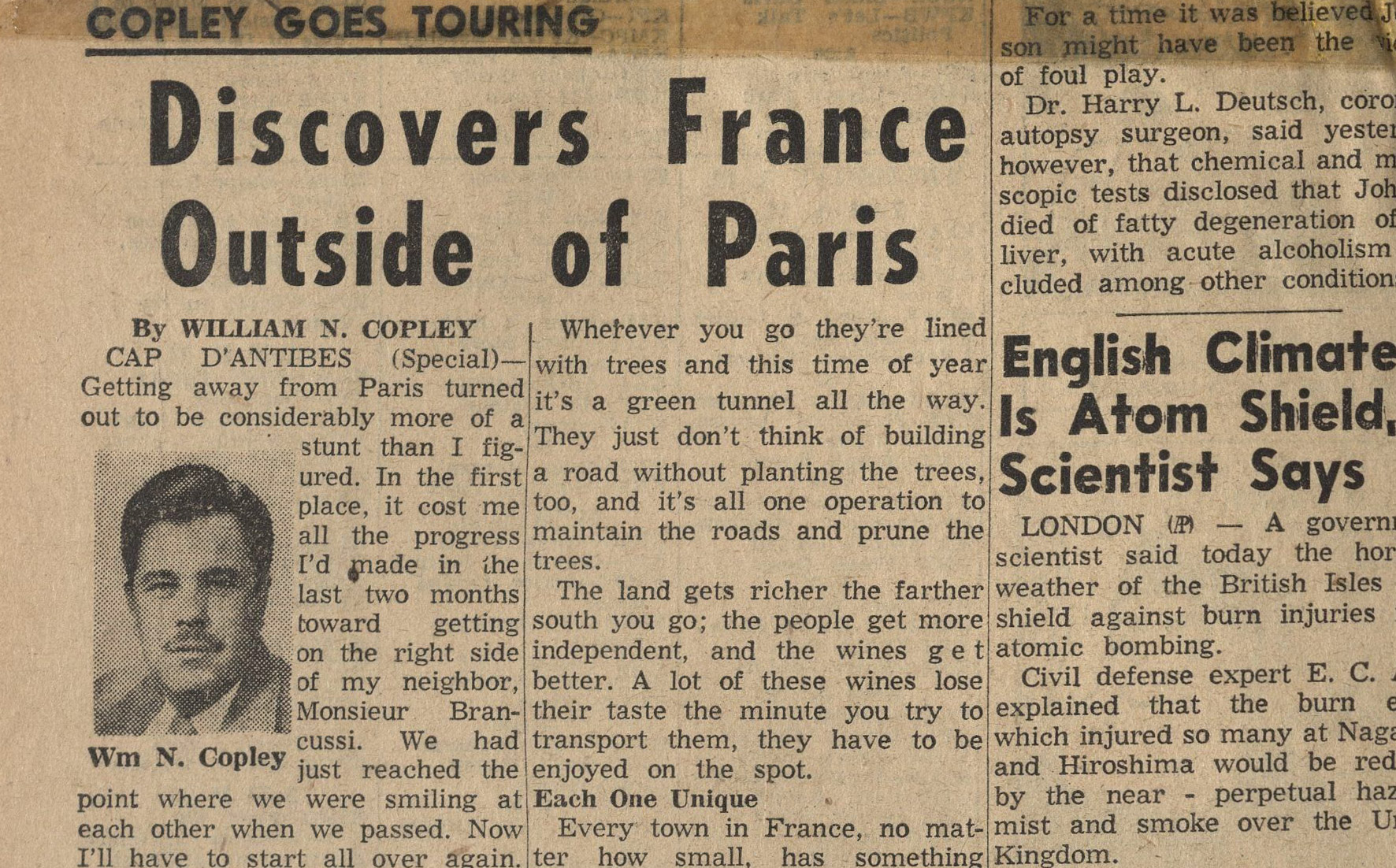
In the third section of William N. Copley: Selected Writings a selection of the artist’s newspaper articles are reprinted for the first time. After moving to Paris from Los Angeles in 1951, Copley authored a newspaper column as a “foreign correspondent” for the Copley Press, the company founded by his father Ira Clifton Copley (1864–1947). These articles appeared in the San Diego Union, Evening Tribune, and numerous other Copley Press-owned newspapers in California and Illinois between 1951 and 1956. Of the 120 known articles written by Copley for the Copley Press, ten are included in Selected Writings.
Unlike Copley’s later writings about art, these articles were written for a general American reader and were intended to convey cultural life in France and Europe from the point of view of an American abroad. For today’s readers they also offer a fascinating document of Copley’s early experiences in Paris and later in Longpont-sur-Orge, the rural suburb outside of Paris where Copley lived and worked from 1954–1962.
Among the Copley Press articles included in Selected Writings are entertaining dispatches from the Impasse Ronsin, the legendary alley of artist studios in Montparnasse where Copley painted after settling in Paris. His neighbors in the Impasse included Constantin Brancusi, then 76 years old and a new acquaintance for Copley. “One of the things that I like to include in my letters to my artist friends at home,” he wrote for the Glendale News Press in May 1952,
is the announcement that I now am living next door to Constantin Brancusi. If I say it the right way I can give the impression that we are great buddies. I can even say that it is thanks to Brancusi that I am able to keep my studio, and it’s not my fault if they assume we are chums. I only do this in hopes they will turn green with envy, for the name of Brancusi is one of the most venerated in the world of modern sculpture.
What I haven’t told my friends yet is that, when I was finally introduced to Brancusi and told him I was his neighbor, he flatly denied it. Still, he must know I’m here because I’ve caught him peeking at me through his door.
Elsewhere Copley recounts his visit to Vallauris to meet Picasso and another article reports happily on Max Ernst’s participation in the 27th Venice Biennale, for which Ernst won the Grand Prize. Selected Writings concludes with this section as a way of charting the development of Copley’s literary voice, which is covered in depth in the first section of the book, Writings About Art and Artists. By the time Copley had set out to write such reflections on Serge Charchoune, Man Ray, Marcel Duchamp, and others, he had already received ample practice reporting on artists and other colorful figures he met while living and traveling in Europe. In Copley’s later prose, which is often moving, lyrical, and funny, there is also an uncommon conversational tone––rare for so much writing about art. Readers can look back to Copley’s newspaper column as the formative venue for his personable style of writing.
William N. Copley: Selected Writings is now available from Artbook, Verlag der Buchhandlung Walther Franz König and your local independent book store.
Image detail: original scrapbook clipping of “Leaving Paris,” first published as “Copley Goes Touring: Discovers France Outside of Paris,” Daily Bank Review, June 1952.